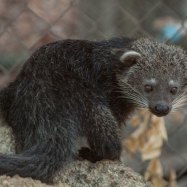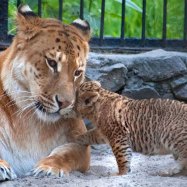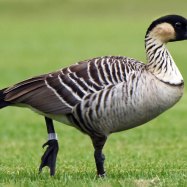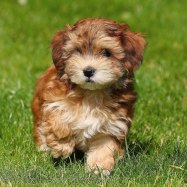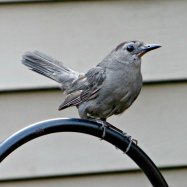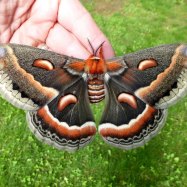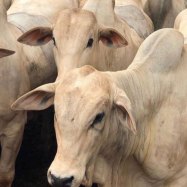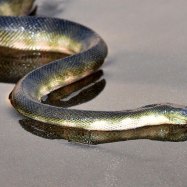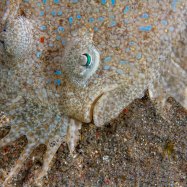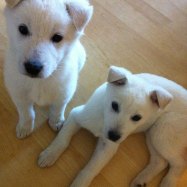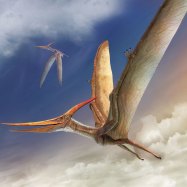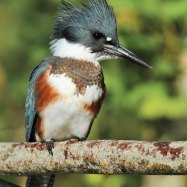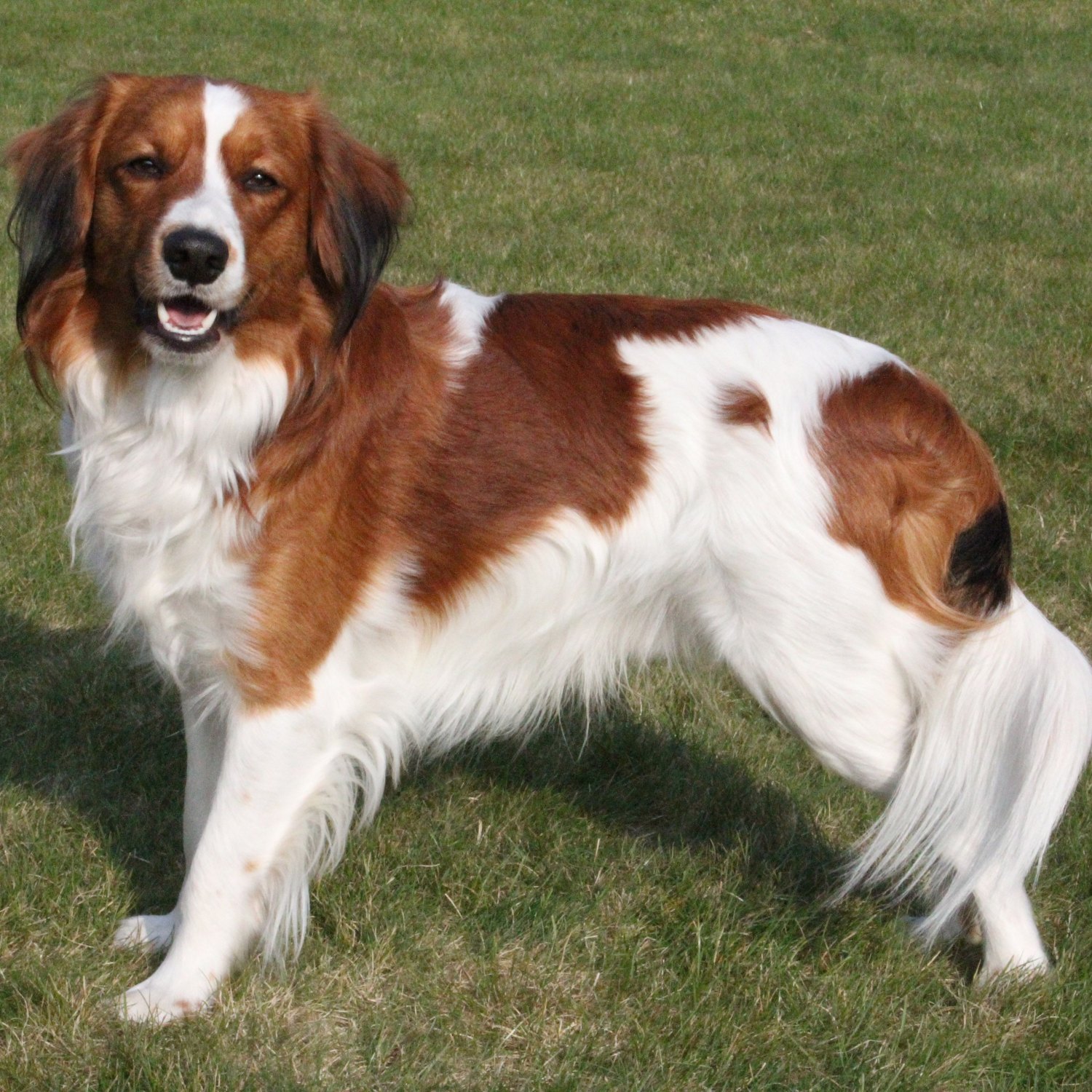
Kooikerhondje
35-40 cm (14-16 inches)
The Kooikerhondje, a charming Dutch breed, is a compact and well-proportioned dog with a length of 35-40 cm. This intelligent canine belongs to the Canidae family and is native to Europe. Its name means little cager dog in Dutch and they were originally bred to hunt ducks. Known for their friendly and lively nature, they make great family pets. #Kooikerhondje #dogbreed #Europe #Canidae
Animal Details Summary:
Common Name: Kooikerhondje
Kingdom: Animalia
Habitat: Varied, including forests and fields
The Story of the Kooikerhondje: The Dutch Hidden Gem
If you're a dog lover, chances are you've heard of popular breeds like Golden Retrievers, German Shepherds, and Labrador Retrievers. But what about the Kooikerhondje? This unique and charming breed may not be as well-known as its counterparts, but it has a rich history and distinct characteristics that make it a truly outstanding animal.A Brief Introduction to the Kooikerhondje
The Kooikerhondje, also known as the Dutch Decoy Dog, is a small spaniel-type breed that originated in the Netherlands. Although its name may be a mouthful to pronounce, it translates to "Little Cager Hound" in English, referring to its role as a duck decoy dog Kooikerhondje.Fast, agile, and alert, the Kooikerhondje was originally bred to help hunters lure ducks into traps by playfully running around ponds and causing a commotion. They are best known for their stunning red and white markings, making them a visually distinct and eye-catching breed.
A Glimpse into the Kooikerhondje's Anatomy
Let's take a closer look at the Kooikerhondje's physical features. Standing at a compact 35-40 cm (14-16 inches) and weighing between 20-25 pounds, these dogs have a well-proportioned and muscular build, perfect for their active and energetic nature.Their coat is medium-length, soft, and slightly wavy, making it easy to maintain with regular brushing. Their unique coloration is a combination of bright red and white markings, with a characteristic black "eyeliner" around their eyes, giving them an almost mystical appearance.
A Fascinating History and Cultural Significance
The Kooikerhondje may be relatively unknown to many, but it has a long and esteemed history in the Netherlands. They were first bred in the 16th century and were used as working dogs for duck hunting, primarily in the province of Gelderland.They were a favorite among the Dutch nobility, with famous admirers including William of Orange and the House of Orange Kakapo. Unfortunately, their numbers drastically declined during the World Wars, with only a small population remaining. Thanks to dedicated breeders, the Kooikerhondje made a comeback in the 20th century and is now recognized as the national breed of the Netherlands.
The Kooikerhondje's Personality and Temperament
Beyond their beautiful appearance and interesting history, the Kooikerhondje is known for its friendly, sociable, and playful nature. They are incredibly intelligent and make excellent companions, getting along well with children, other pets, and strangers.However, their hunting instincts still run deep, so they may not be the best fit for households with small animals. They require daily exercise and mental stimulation to keep them happy and healthy, which can be easily achieved through playing fetch or agility training.
Exploring the Kooikerhondje's Habitat and Distribution
In their early days, Kooikerhondjes were primarily found in the province of Gelderland, but they are now bred and loved all over the Netherlands. They are versatile animals and are well-suited for a variety of habitats, including forests, fields, and even suburban homes.Their love for water and their agility make them excellent swimmers, making them ideal for homes near lakes or ponds. Although they are primarily found in the Netherlands, they are slowly gaining popularity in other parts of the world, with breeders and enthusiasts establishing themselves in countries like the United States, Canada, and Germany.
The Kooikerhondje's Diet and Feeding Habits
Being descendants of carnivorous wolves, it's no surprise that Kooikerhondjes thrive on a diet rich in animal protein. Typically, they should be fed a balanced diet of high-quality, grain-free dog food, with added fruits and vegetables for variety and extra nutrition. Home-cooked meals can also complement their diet, as long as they are well-balanced and meet their dietary requirements.It's essential to monitor their food intake and avoid overfeeding, as this can lead to weight gain and other health problems. Additionally, they should always have access to clean, fresh water, especially after strenuous exercise.
Caring for Your Kooikerhondje: Grooming, Health, and Training
The Kooikerhondje is a relatively low-maintenance breed, requiring minimal grooming due to its weather-resistant coat. However, regular brushing is necessary to prevent matting and remove loose hair. They also require occasional baths to keep them clean and smelling fresh.When it comes to their health, Kooikerhondjes are generally a robust breed, but like all dogs, they are prone to certain health conditions. These can include hip dysplasia, epilepsy, and spinal disorders. Regular vet check-ups and proper care can help prevent or detect these issues early on.
In terms of training, the Kooikerhondje is highly trainable and eager to please, making them perfect for obedience and agility training. Early socialization is crucial to ensure they grow into well-behaved and well-adjusted dogs. Positive reinforcement and consistency are key to successfully training a Kooikerhondje.
A Great Addition to Any Family
Though not as well-known as some of its canine counterparts, the Kooikerhondje has a lot to offer as a family pet. They are intelligent, energetic, and loyal companions, making them a great addition to any household, as long as their exercise and mental needs are met.Their unique markings and fascinating history make them an exciting breed to admire and learn about. With their easy-going nature and love for adventure, the Kooikerhondje is sure to capture the hearts of many dog lovers worldwide. So, if you're looking for a charming, lively, and lovable companion, don't overlook the Dutch hidden gem, the Kooikerhondje!

Kooikerhondje
Animal Details Kooikerhondje - Scientific Name: Canis lupus familiaris
- Category: Animals K
- Scientific Name: Canis lupus familiaris
- Common Name: Kooikerhondje
- Kingdom: Animalia
- Phylum: Chordata
- Class: Mammalia
- Order: Carnivora
- Family: Canidae
- Habitat: Varied, including forests and fields
- Feeding Method: Carnivorous
- Geographical Distribution: Netherlands
- Country of Origin: Netherlands
- Location: Europe
- Animal Coloration: Red and white
- Body Shape: Compact and well-proportioned
- Length: 35-40 cm (14-16 inches)
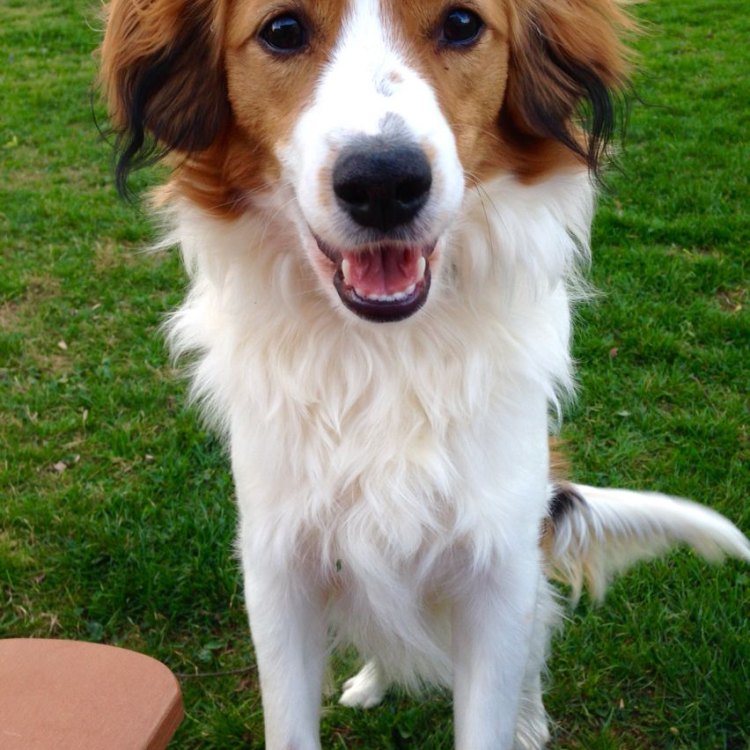
Kooikerhondje
- Adult Size: Medium
- Average Lifespan: 10-16 years
- Reproduction: Sexual
- Reproductive Behavior: Seasonal breeders
- Sound or Call: Barking
- Migration Pattern: Non-migratory
- Social Groups: Pack animals
- Behavior: Intelligent, active, and friendly
- Threats: None
- Conservation Status: Not Evaluated
- Impact on Ecosystem: Unknown
- Human Use: Companion dogs
- Distinctive Features: Feathered ears and tail
- Interesting Facts: Kooikerhondjes were historically used as tolling dogs to lure and drive ducks into traps.
- Predator: None
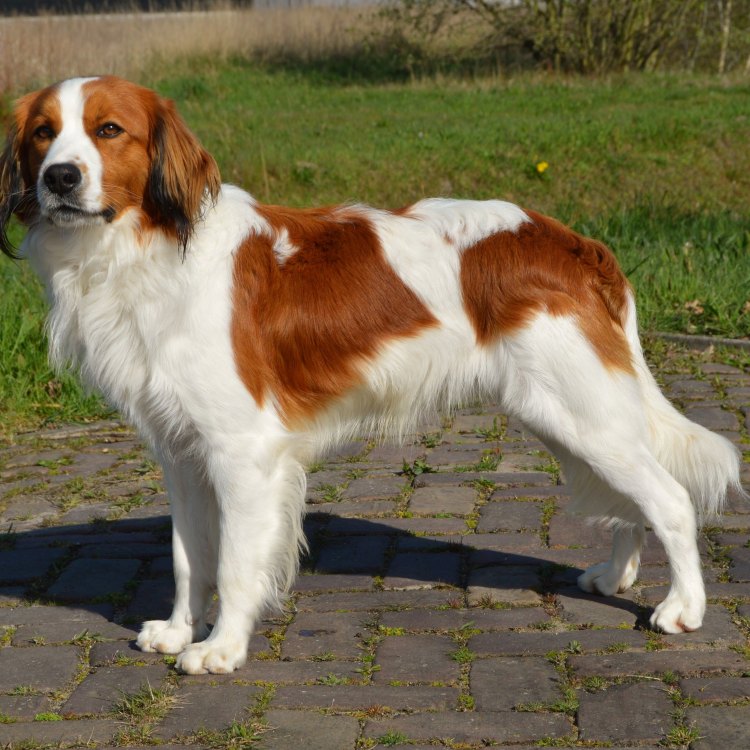
Canis lupus familiaris
The Enigmatic Kooikerhondje: A Tale of a Feather-Eared and Tail-Wagging Companion
As dog lovers, we are always on the lookout for the next adorable, loyal, and intelligent breed to add to our furry family. With hundreds of breeds to choose from, it can be overwhelming to find the perfect dog for our lifestyle. However, there is one often-overlooked breed that combines all these desired qualities and more – the Kooikerhondje. Pronounced as "koy-ker-hond-tje," this Dutch breed may be small in stature, but it packs a punch in terms of personality, history, and unique features PeaceOfAnimals.Com. So, grab a cup of coffee, curl up with your current canine companion, and let's dive into the fascinating world of the Kooikerhondje.Uncovering the Origins of the Kooikerhondje
The Kooikerhondje has a long and mysterious history dating back to the 16th century in the Netherlands. Its name is derived from two Dutch words – "kooi," meaning cage, and "hond," meaning dog. This breed was originally bred to toll, or lure, ducks into cages for hunters to retrieve. The Kooikerhondje would happily wag its distinctive feathered tail and ears while playing with the ducks, catching their attention and leading them towards the cage.In addition to duck tolling, the Kooikerhondje was also used for small game hunting and as a vermin exterminator, thanks to its keen sense of smell and agility. However, as with many other working breeds, its purpose dwindled as new hunting techniques and technologies emerged. By the end of World War II, this breed was on the verge of extinction. However, a group of dedicated breeders took on the task of reviving the Kooikerhondje, and by the 1960s, it was once again a popular breed in its homeland Kodkod.
Average Size, Lifespan, and Reproduction
The Kooikerhondje is classified as a medium-sized breed, typically weighing between 20-30 pounds and standing at 14-17 inches tall at the shoulder. They have a life expectancy of 10-16 years, making them a long-term companion for any family.When it comes to reproduction, the Kooikerhondje follows the standard sexual reproduction method. However, they are unique in their reproductive behavior, being seasonal breeders. This means that they will only go into heat, or fertile period, during certain times of the year, typically in the spring and fall. This is a natural process that allows the breed to produce healthy and well-timed litters.
Social Groups and Behavior of the Kooikerhondje
In the wild, dogs are known to be social animals, traveling and hunting in packs. The Kooikerhondje is no exception, as they are genetically programmed to be pack animals. This means they crave companionship and do not do well when left alone for long periods.Their behavior is a perfect reflection of their intelligent and active nature. This breed requires daily mental and physical stimulation to keep them happy and healthy. They excel in activities such as agility, flyball, and obedience training, thanks to their eagerness to please and quick learning ability. However, they can also be independent and stubborn at times, so consistent and patient training is essential.
Another trait that makes the Kooikerhondje a popular companion dog is its friendly nature. They are known to be excellent with children and other pets, making them a suitable addition to any family. Their gentle and affectionate demeanor also makes them great therapy dogs, providing comfort and support to those in need.
Threats and Conservation Status of the Kooikerhondje
Unlike many animal species, the Kooikerhondje faces no immediate threats in the wild. This breed is not prone to any specific health issues, making them a relatively low-maintenance dog. Their lineage also plays a role in their conservation status, as they were once on the brink of extinction. However, thanks to dedicated breeders and enthusiastic pet owners, the Kooikerhondje is now a thriving breed with no conservation concerns.The Kooikerhondje and its Impact on the Ecosystem
As with any animal species, the Kooikerhondje plays a role in its ecosystem. However, due to its long history as a domesticated breed, its impact on the natural environment is unknown. They are not known to have any significant involvement in hunting or prey-predator relationships, making them a neutral addition to the ecosystem.Human Use and Distinctive Features of the Kooikerhondje
The primary purpose of the Kooikerhondje is to be a loving and loyal companion dog. Their innate intelligence, active nature, and friendly demeanor make them the perfect fit for any household. They do not have any specific human uses, such as working dogs or guard dogs, as they are not bred for those purposes.One of the most distinctive features of the Kooikerhondje is its feathered ears and tail. These features not only make them stand out in a crowd but also played a significant role in their historic job as duck tolling dogs. The featherings acted as a visual attraction to the ducks, and the wagging tail was a sign of playfulness, making them irresistible to the birds.
Interesting Facts About the Kooikerhondje
- The Kooikerhondje is the national breed of the Netherlands, recognized by the Dutch Kennel Club in 1966.- They were also popular among the Dutch royal family, with many paintings and portraits featuring the breed.
- The Kooikerhondje's coat is waterproof, making them great at retrieving objects from the water.
- Despite their small size, they are known for their loud and distinct bark, making them excellent watchdogs.
- The Kooikerhondje is still used as a tolling dog today, although mainly for recreational hunting and sports.
The Kooikerhondje's Role in Today's Society
In today's world, where dogs are more than just working animals, the Kooikerhondje has found its place as a beloved companion. Their friendly and affectionate nature, combined with their unique looks and intelligent minds, make them a popular choice for families and individuals alike. They also serve as therapy dogs, providing comfort and support to those in need, and as competitive agility and flyball athletes, showcasing their agility and speed.In Conclusion
The Kooikerhondje may be small in stature, but it has a rich and impressive history, unique features, and an endearing personality that has captured the hearts of many. This breed's timeless charm and adaptability to modern life make it an excellent choice for any dog lover. Whether you want a couch buddy or an active adventure partner, the Kooikerhondje is sure to be a loyal and loving companion. So, consider adding this feather-eared and tail-wagging breed to your family, and experience the joy that is the captivating Kooikerhondje.
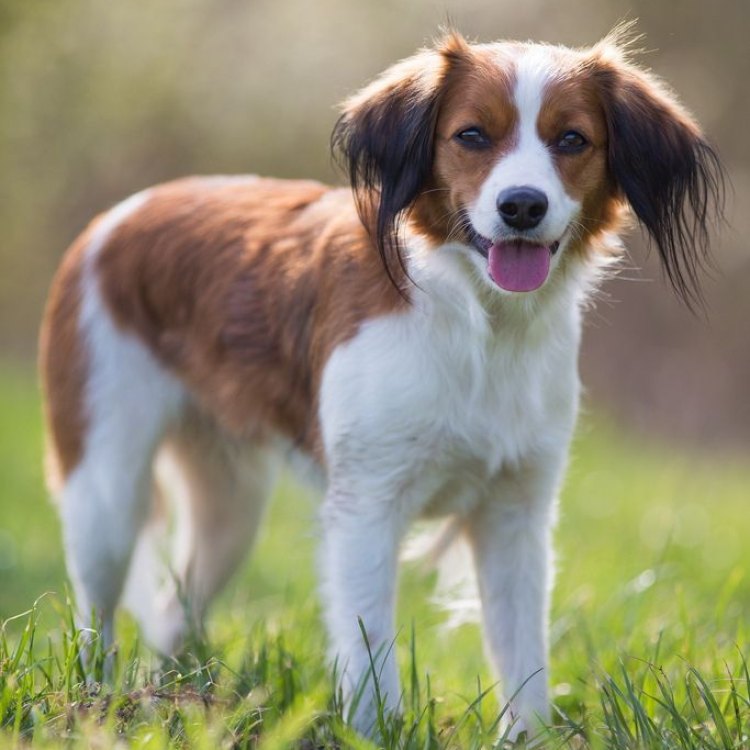
The Story of the Kooikerhondje: The Dutch Hidden Gem
Disclaimer: The content provided is for informational purposes only. We cannot guarantee the accuracy of the information on this page 100%. All information provided here may change without prior notice.

